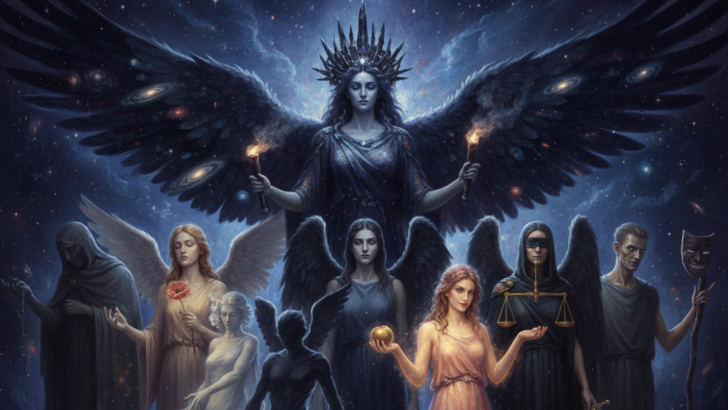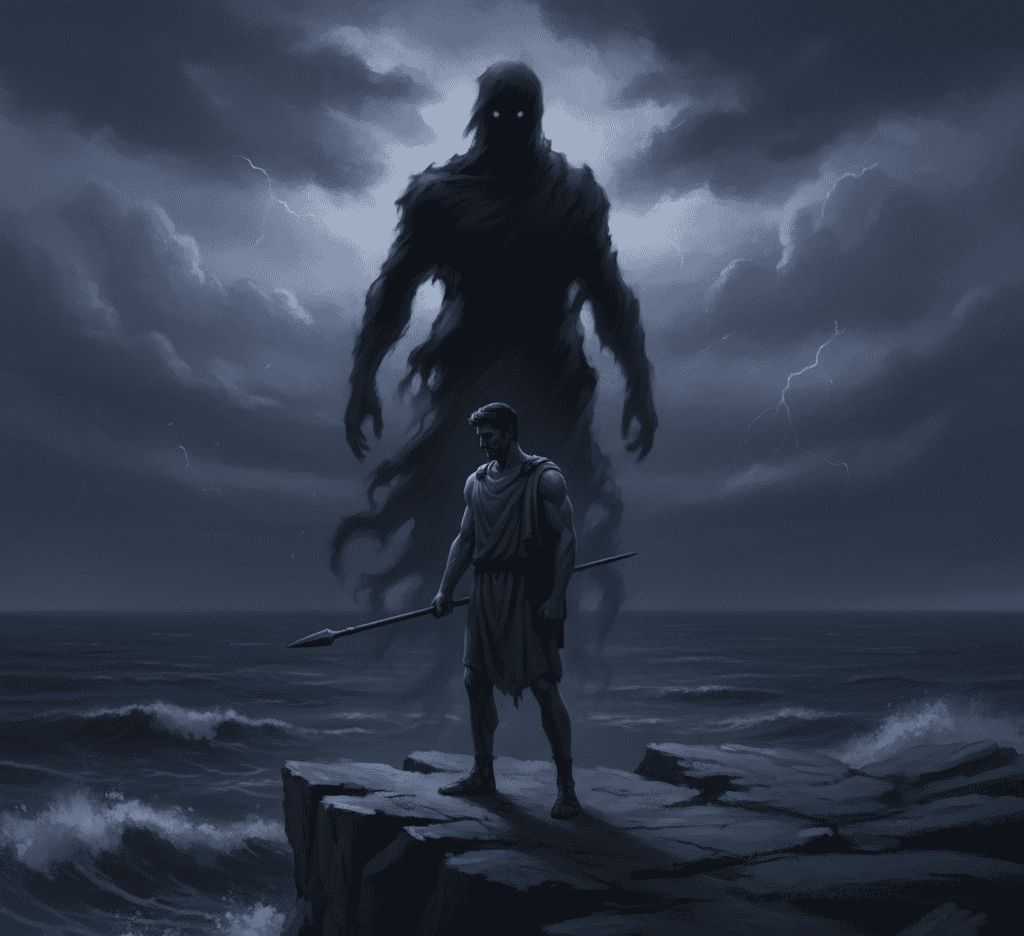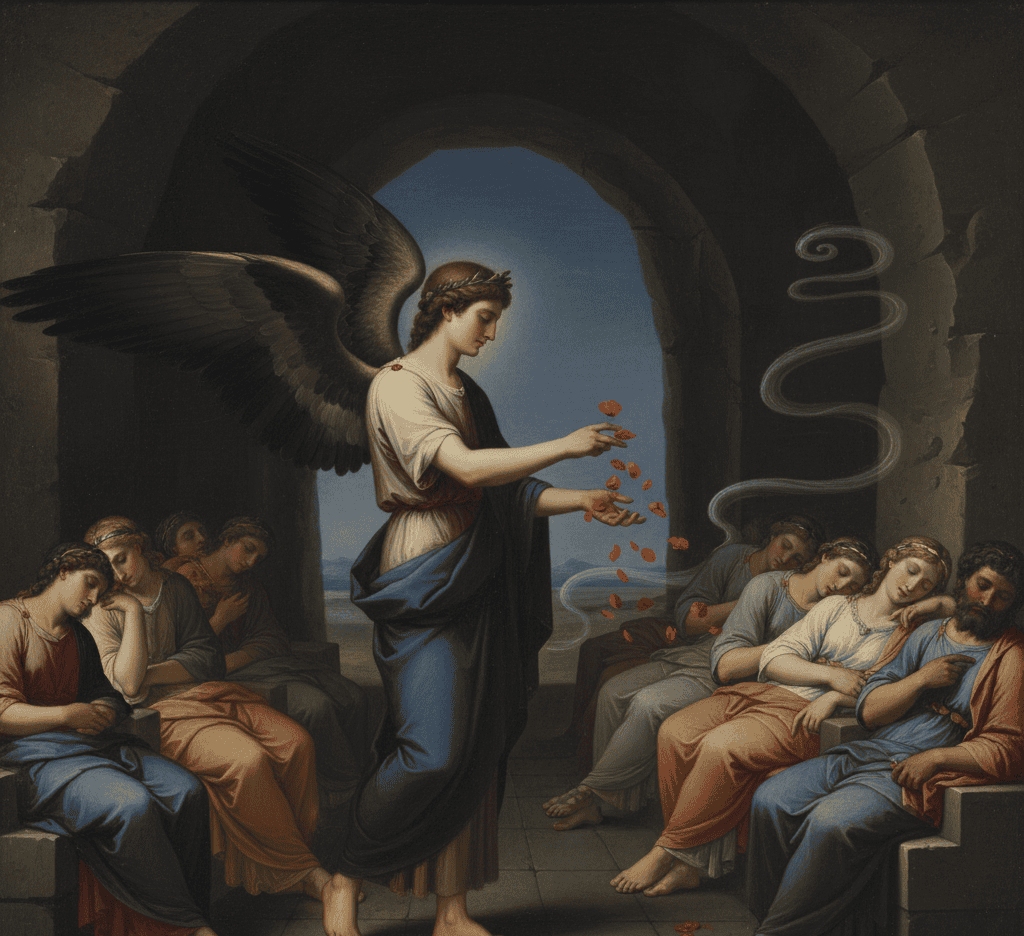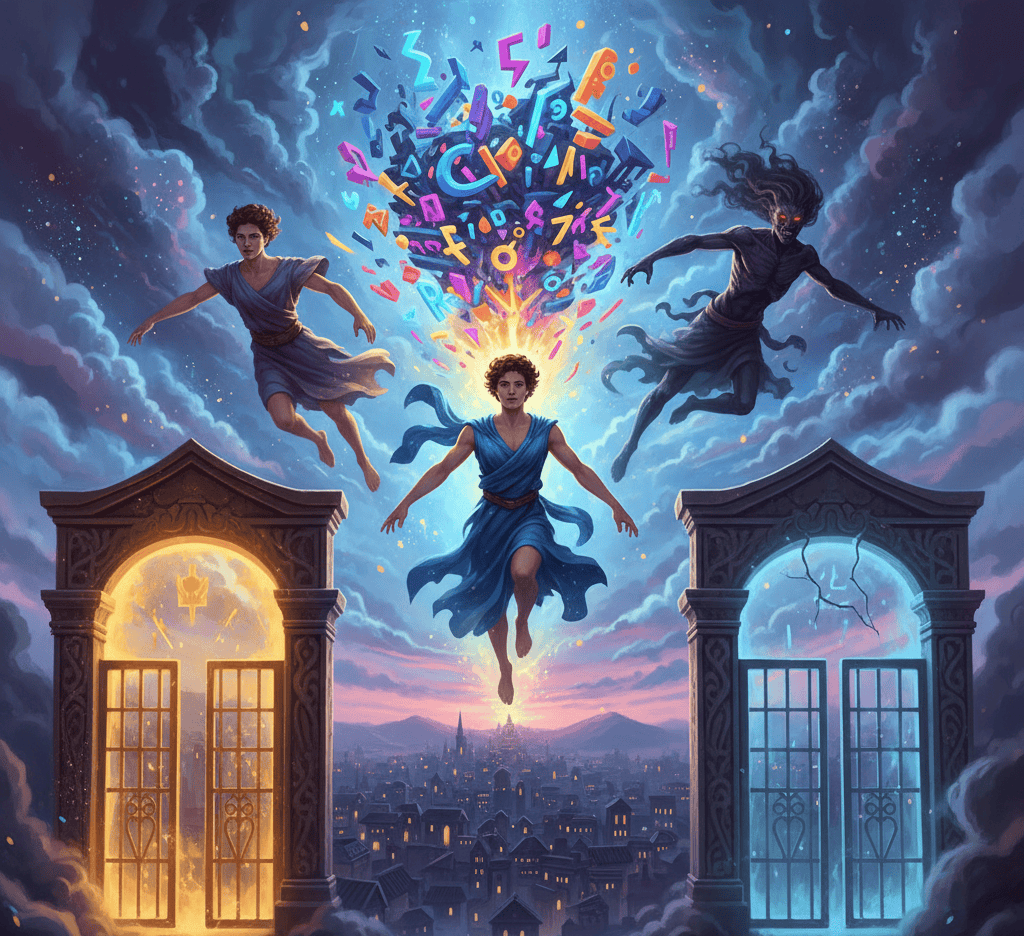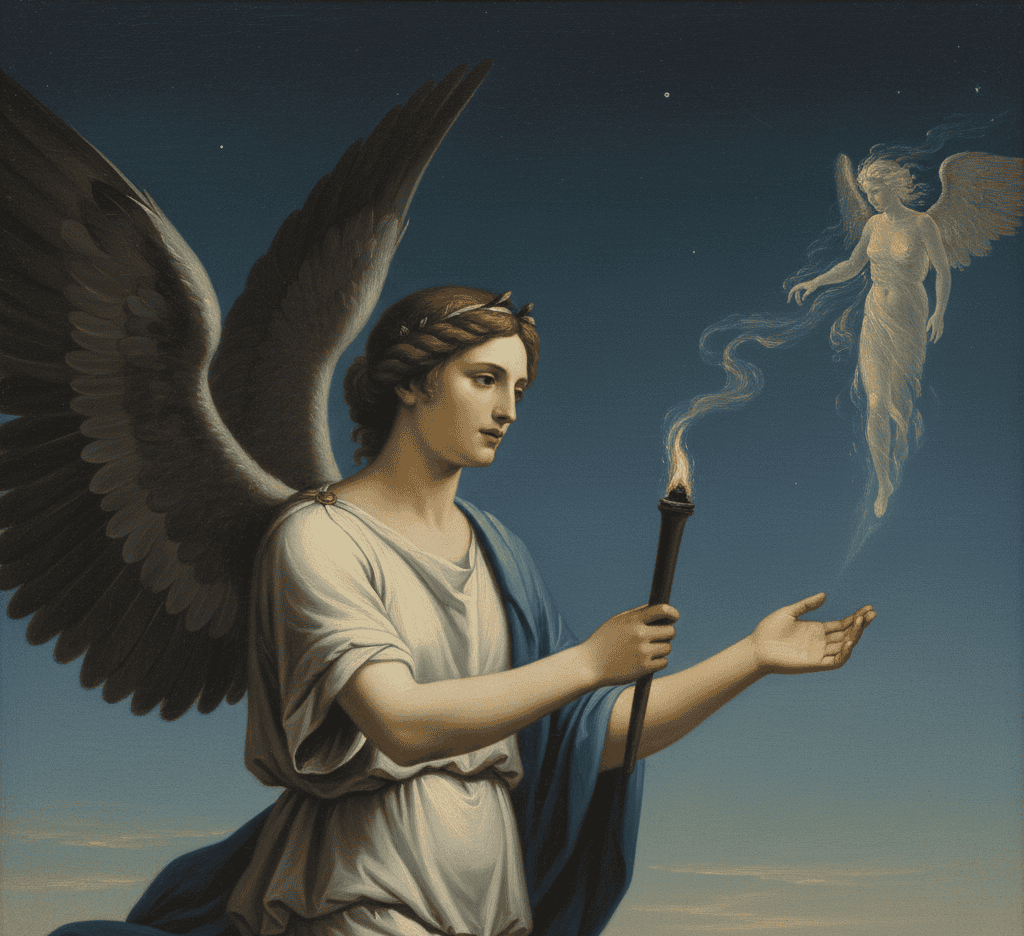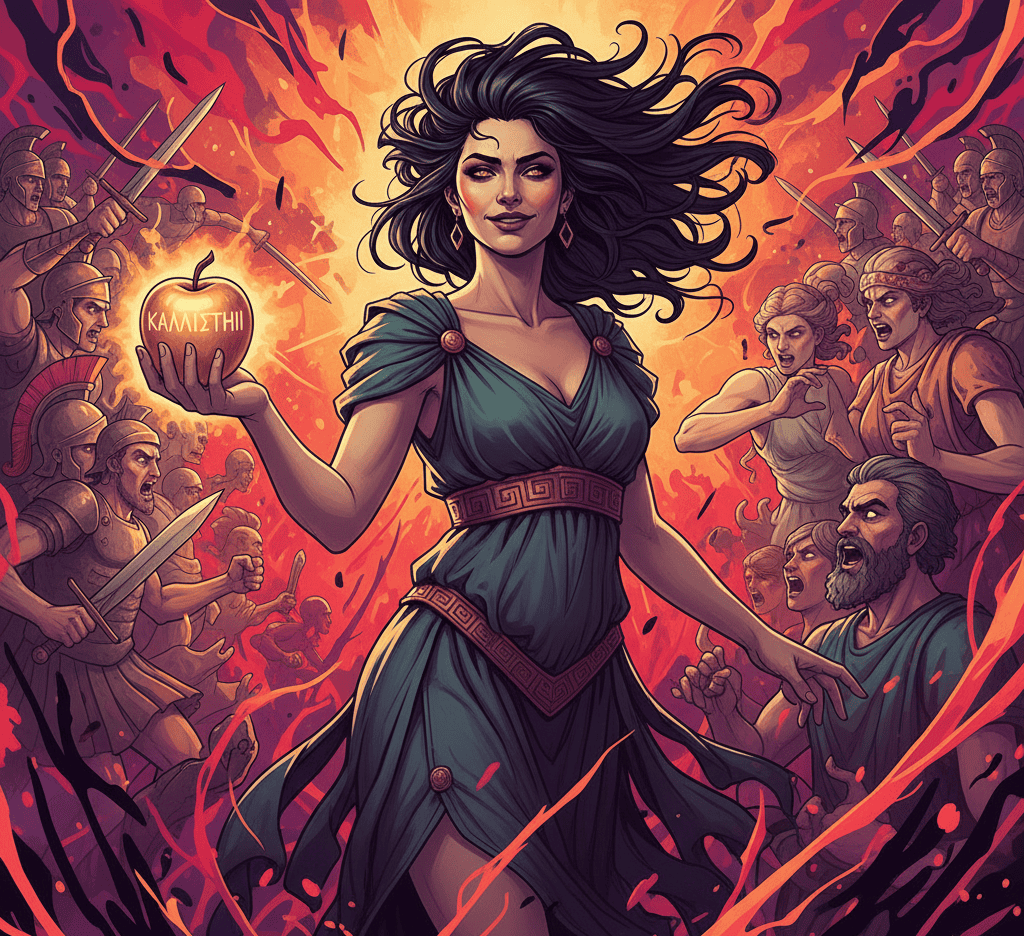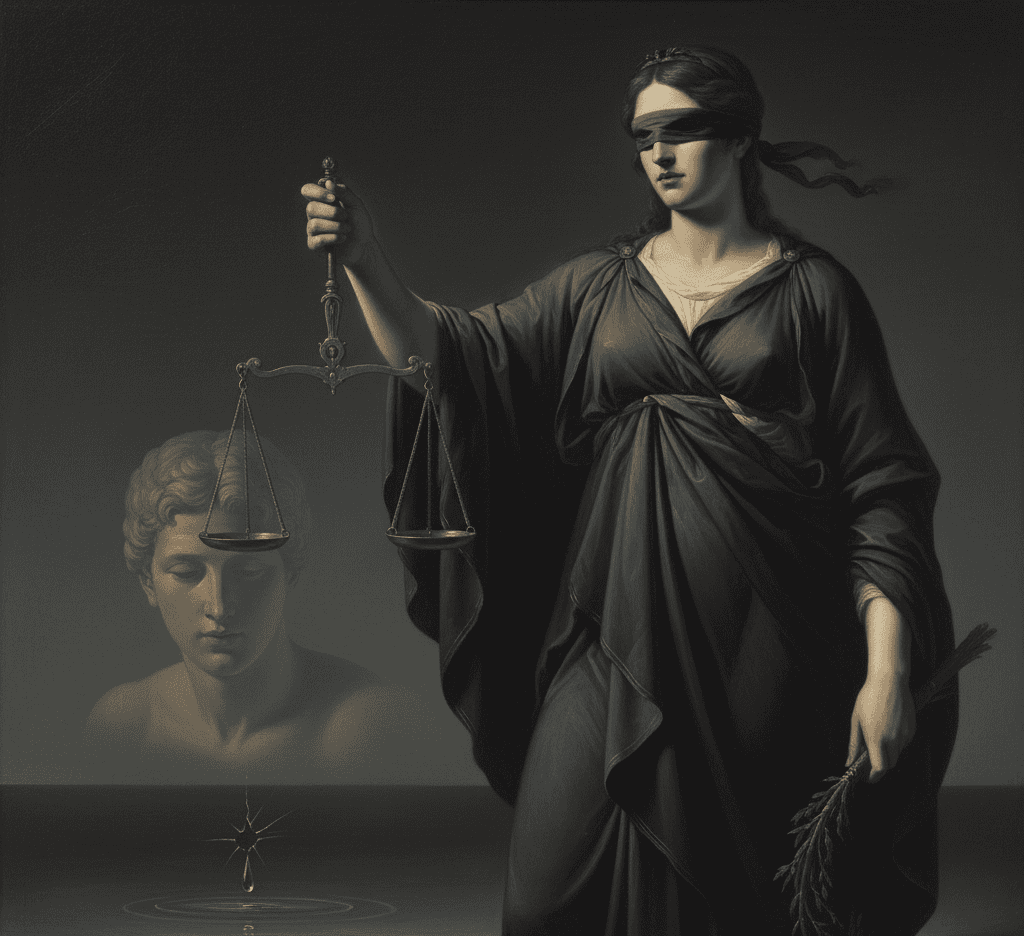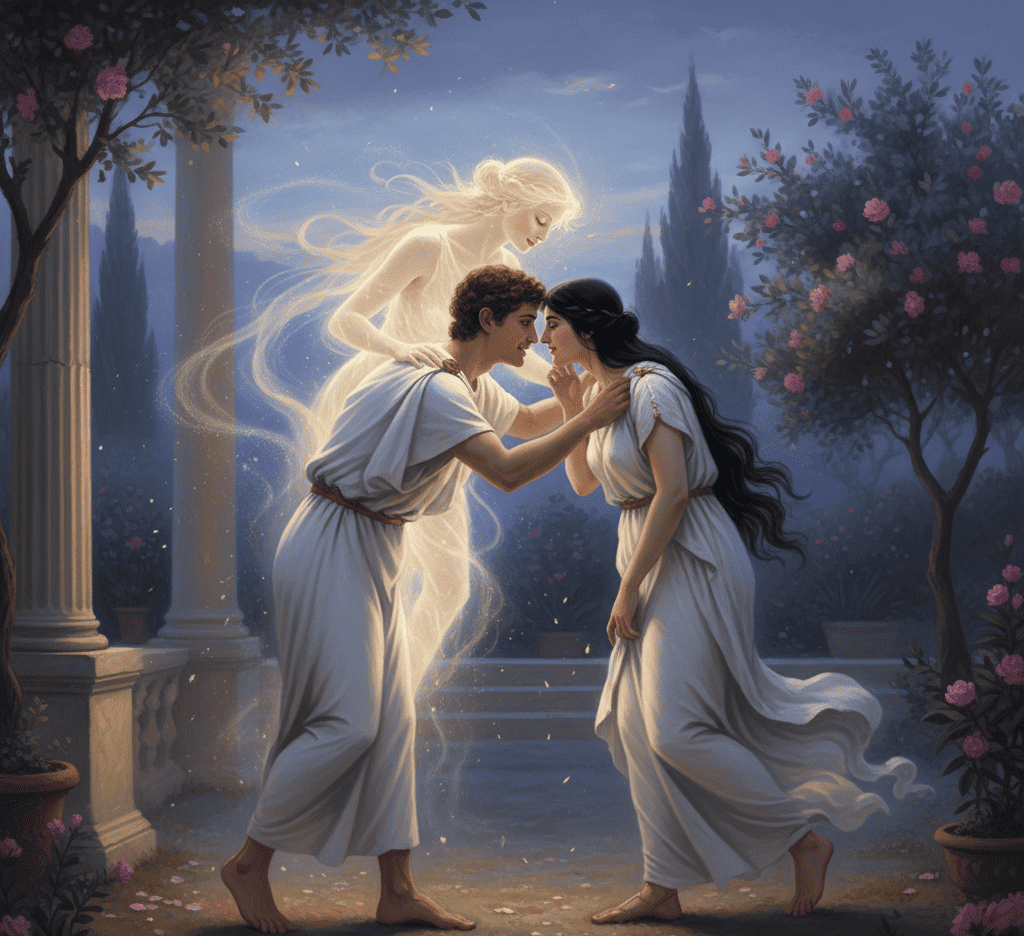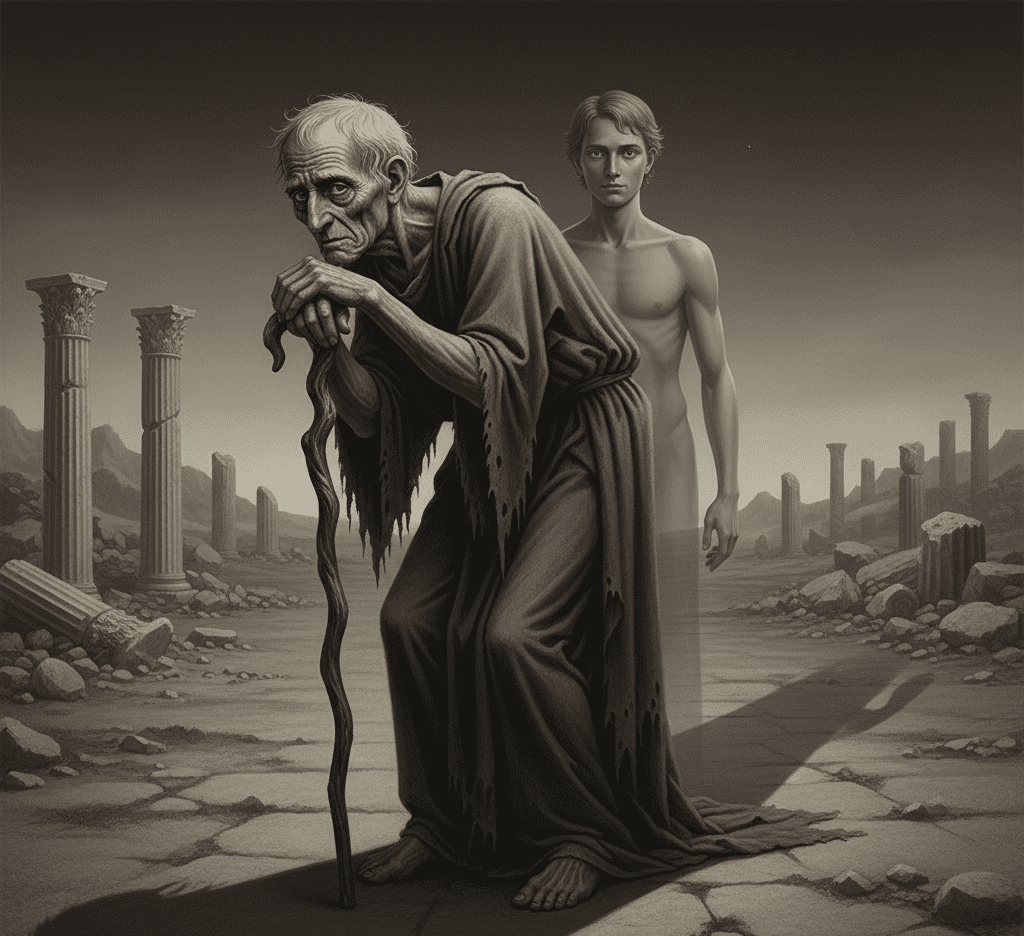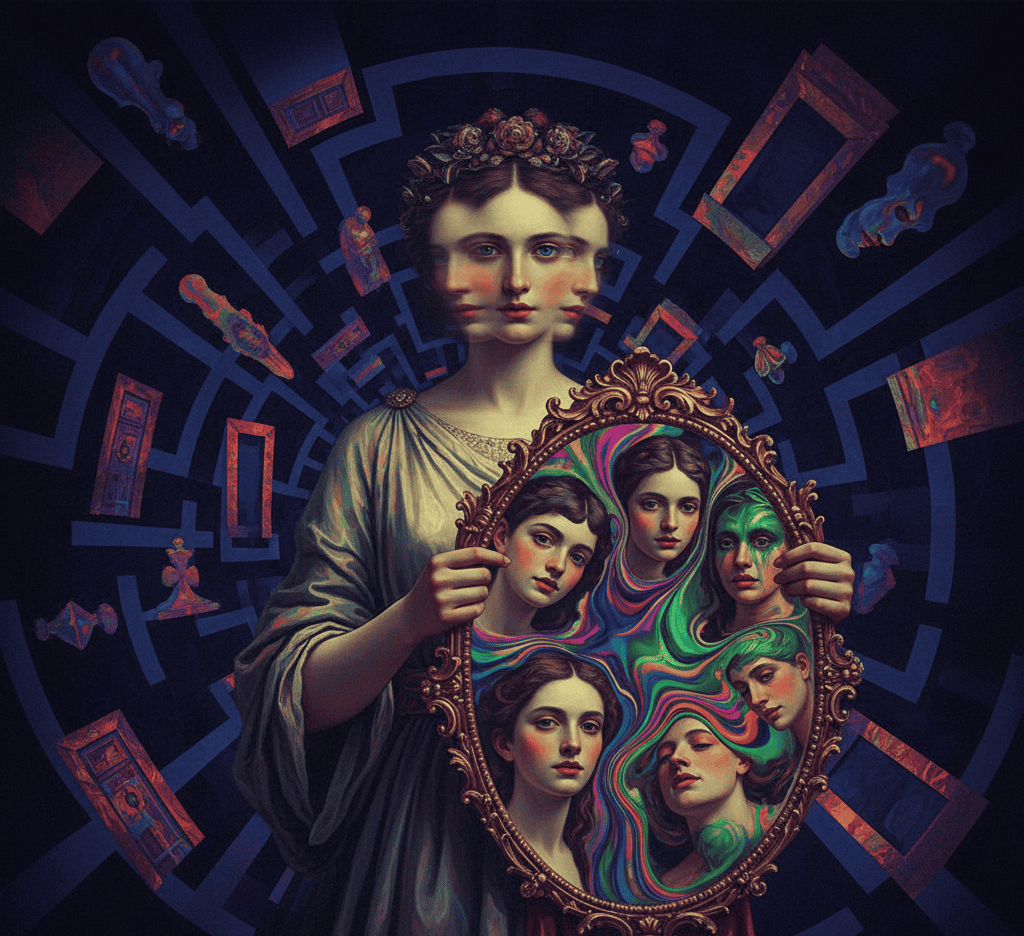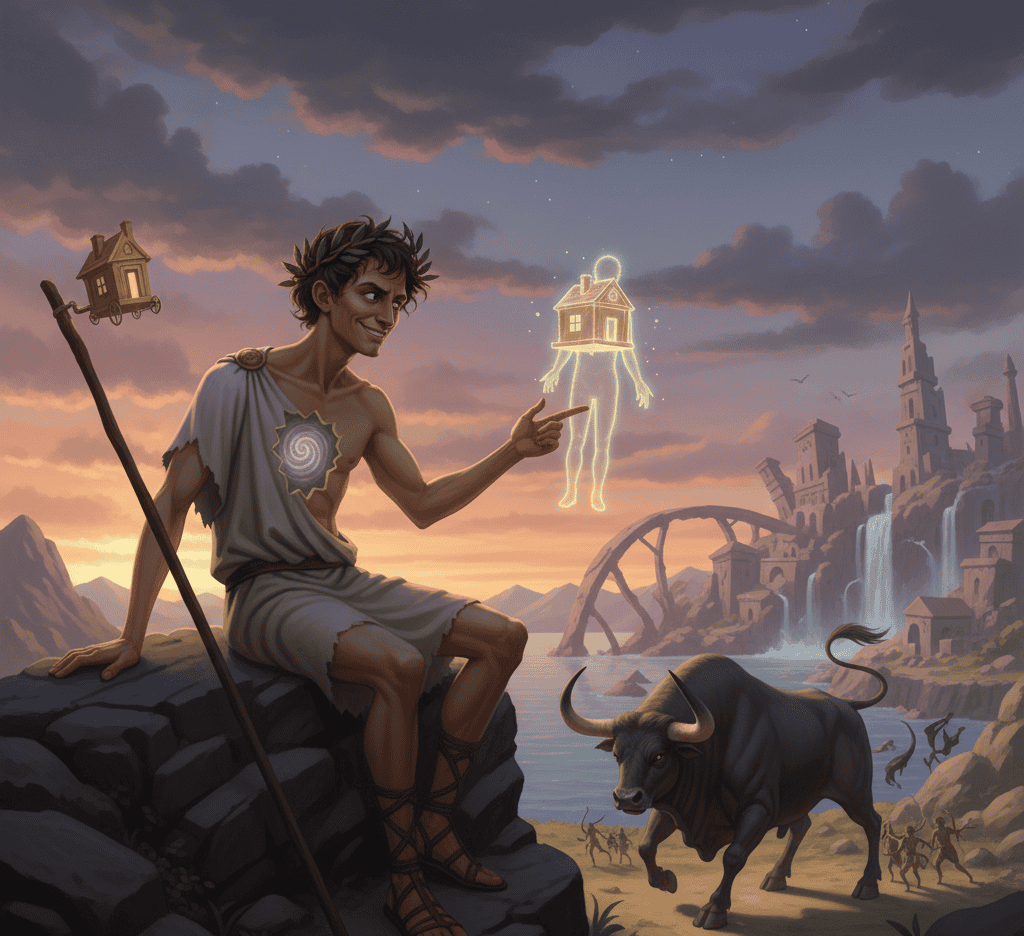In Greek mythology, Nyx was not just the night. She was the night – mysterious, beautiful, and endlessly powerful.
From her came some of the most ancient and haunting forces in the cosmos.
Many of her children are forgotten today, overshadowed by gods like Zeus and Athena, yet their stories shaped how the Greeks imagined destiny, dreams, and death itself.
Let’s step into the shadows and meet ten of Nyx’s fascinating children, born from the darkness between stars.
1. Moros – The Spirit of Doom
Moros was one of the first children of Nyx, representing fate’s dark inevitability. While his siblings shaped the emotions and moments of life, Moros embodied the end that comes for all things.
He didn’t bring death itself, that was Thanatos, but the 運命 that leads to it. Ancient poets described him as a shadow at the edge of every decision, whispering what cannot be undone.
His name became a warning: to challenge destiny was to walk straight into Moros’s embrace.
2. Hypnos – The God of Sleep
Gentler than most of his siblings, Hypnos ruled the quiet hours when mortals drifted into dreams. His home lay in a cave where no light ever reached, and poppies bloomed endlessly.
With a touch of his hand or the sound of his voice, even Zeus could be lulled to rest. Yet sleep was not without danger.
Hypnos’ twin brother, Thanatos, waited near, reminding all that slumber and death were closer than they seemed.
The Greeks left offerings of honey and milk before bedtime, asking Hypnos to grant peaceful dreams and not eternal ones.
3. Oneiroi – The Spirits of Dreams
From Nyx’s depths also came the Oneiroi, spirits who carried dreams to mortals. They entered through a gate of horn for true visions and a gate of ivory for false ones.
Among them, Morpheus was the most famous, shaping dreams into human forms. The others, Phantasos and Phobetor, brought images of things and beasts, both beautiful and terrifying.
Together, they reminded humanity that every night’s rest was a journey through Nyx’s domain, where imagination and prophecy blurred into one.
4. Thanatos – The Personification of Death
Thanatos was death itself, but not the violent or vengeful kind. He was calm, inevitable, and patient.
Artists portrayed him with wings and a gentle gaze, sometimes carrying a torch turned upside down. To the Greeks, Thanatos was not an enemy but a quiet companion who ended pain.
Even though his presence was feared, his mother’s shadow made him compassionate. He was the soft whisper at the final breath, the night that follows every sunset.
5. Eris – The Goddess of Strife
Eris was chaos given form, and she loved nothing more than stirring conflict among gods and mortals alike. Yet she was not purely evil.
To the Greeks, strife could inspire growth, courage, and change. It was Eris who tossed the golden apple at the wedding of Peleus and Thetis, sparking the Trojan War.
Some myths say she walked among armies before battle, her laughter echoing through the screams. Her existence proved that even in darkness, creation often begins with a spark of discord.
6. Nemesis – The Goddess of Divine Justice
Nemesis was one of Nyx’s most respected daughters. She brought balance where arrogance and cruelty had tipped the scales.
Her name means “to give what is due,” and she punished both gods and mortals who grew too proud.
When Narcissus fell in love with his own reflection, it was Nemesis who led him to the pool where he met his fate.
She was not vengeance but fairness made divine, a reminder that even the night has a moral order.
7. Philotes – The Spirit of Friendship and Affection
Not all of Nyx’s children were dark or terrible. Philotes was born from the softer shadows, representing love, trust, and kindness among mortals.
She walked unseen between friends and lovers, strengthening bonds and soothing tempers. Through her, Nyx revealed that darkness could cradle warmth just as easily as fear.
In temples, offerings to Philotes were made alongside those for Eros and Aphrodite, showing that affection had both divine and shadowed origins.
8. Geras – The Spirit of Old Age
Few remembered Geras with fondness, yet he was one of Nyx’s most profound creations. Representing old age, he was often shown as a frail man leaning on a stick, shadowing even the strongest heroes.
He reminded mortals and gods alike that time’s flow could not be escaped. Heracles once mocked Geras, but soon found himself weakened and mortal again.
Geras was not punishment – he was the balance that gave youth meaning. The Greeks honored him quietly, knowing that age was as natural as the coming of night.
9. Apate – The Spirit of Deception
Apate was born when Nyx dreamed of secrets. She moved unseen through hearts and minds, twisting truth into illusion.
She could make a coward seem brave or a liar sound honest. The gods feared her influence, for she spared no one, not even Zeus himself.
Yet deception, in her eyes, was not evil. It was an art form, a mirror showing how much truth people were willing to ignore.
Her essence lingers today in myths, politics, and even stories told to comfort the heart.
10. Momus – The Spirit of Mockery and Criticism
The last of Nyx’s forgotten children was Momus, the god of satire and fault-finding. He mocked everyone, even the gods, pointing out their flaws with cutting humor.
Zeus eventually cast him from Olympus for his relentless honesty. But Momus played an important role: he revealed that perfection was an illusion.
Through laughter and ridicule, he forced gods and mortals alike to see their hypocrisy. His voice echoed Nyx’s wisdom—that darkness was not always destruction. Sometimes it was truth hiding in jest.

私は生まれたときから、常に神との強いつながりを感じていた。作家として、また指導者として、私の使命は、人々が最も暗い時代に愛と幸福と内なる強さを見つけるのを助けることである。

